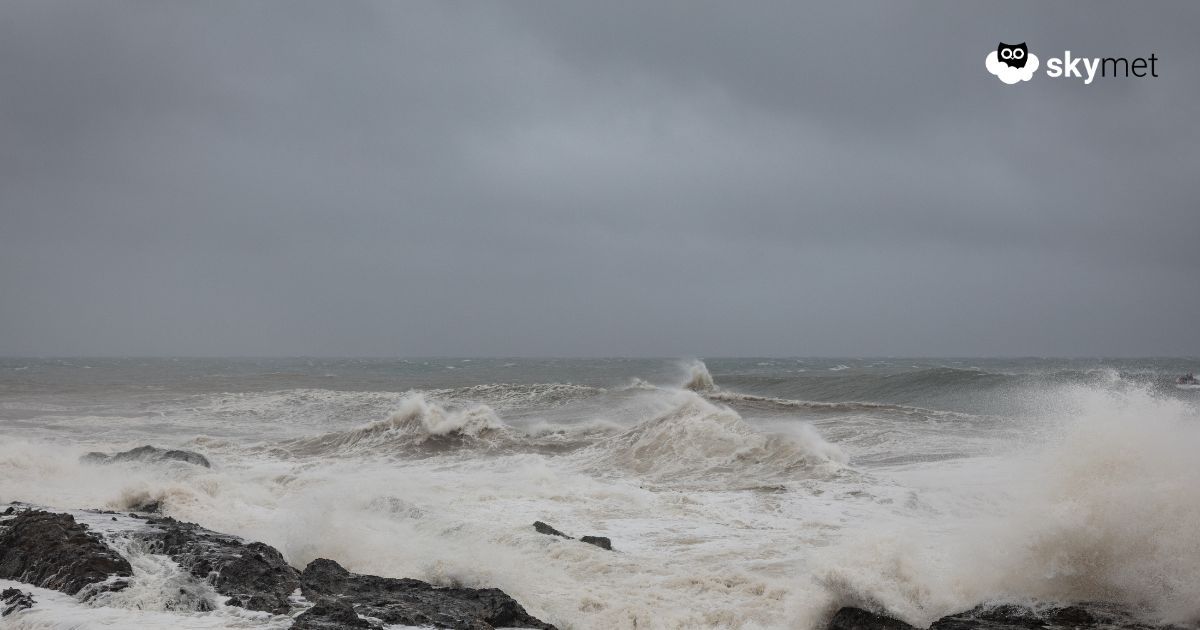The oceanic parameters play an important role in carrying forward the monsoon activity throughout the season. The Indian Ocean Dipole (IOD) and El Niño–Southern Oscillation (ENSO) are two interconnected climate patterns that significantly influence the global weather and climate. ENSO, primarily affecting the Pacific Ocean, can influence the IOD in the Indian Ocean, and vice versa.
Positive IOD events, characterized by warmer waters in the western Indian Ocean and cooler waters in the east, are often linked to stronger ENSO events, particularly El Niño, and can even influence the following year’s ENSO conditions. The strength of the ENSO–IOD connection can vary over time, influenced by factors like the Atlantic Multidecadal Oscillation (AMO). IOD events have an asymmetric influence over the Southern Oscillation as well. Positive IOD events seem to have a stronger influence on the following year’s ENSO than negative IOD events. This asymmetry is linked to how IOD-induced atmospheric anomalies affect the Atlantic Ocean, which can then influence the Pacific.
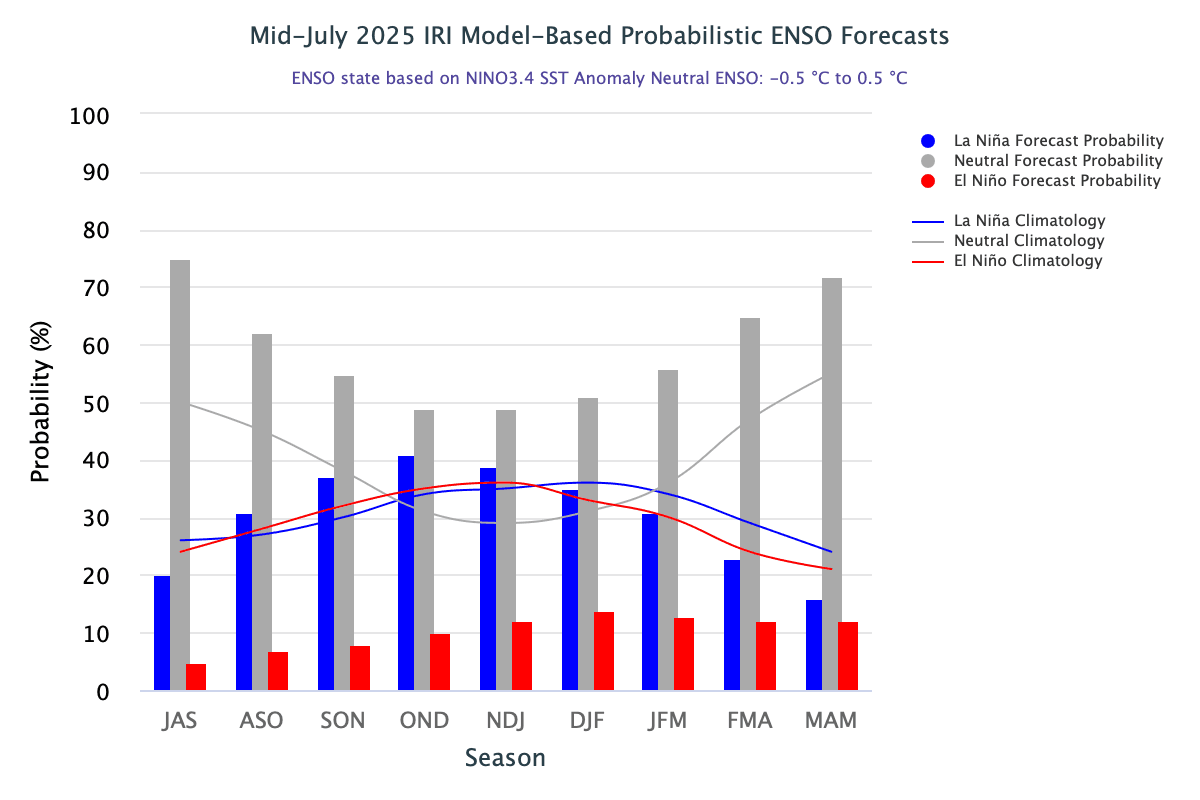
ENSO: The Climate Prediction Center continues with the ENSO Alert System Status as: Not Active. The Oceanic Niño Index (ONI) is the principal measure for monitoring, assessing, and predicting ENSO. This is one index that helps to place the current events into a historical perspective. The ONI for the last three overlapping quarters (M–A–M, M–J–J, J–J–A) has been retained at -0.1. There is another index, RONI (Relative Ocean Niño Index), which measures sea surface temperature anomalies in the Niño 3.4 region (5°N–5°S, 120°W–170°W) relative to the rest of the equatorial band. RONI has remained below the -0.5 La Niña threshold for the past seven overlapping seasons.
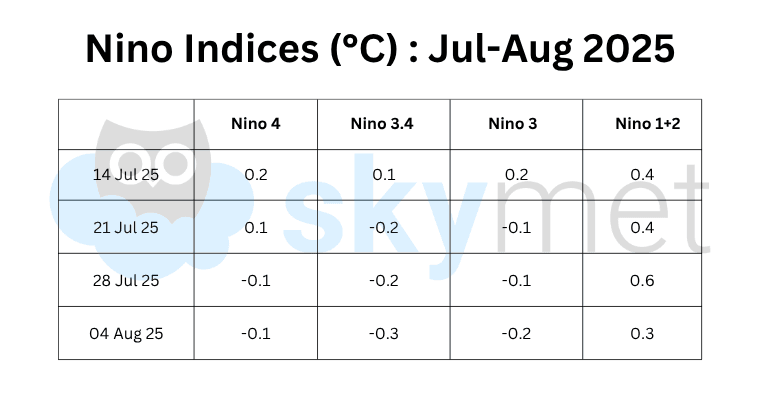
La Niña conditions had ended in Feb 2025. Thereafter, all four Niño indices remained within the threshold of +/-0.4°C. More often, these indices retained negative values except for a period of four weeks from mid-Jun to mid-Jul. The Niño 3.4 index has consistently remained between -0.2 to -0.3 for the last three weeks. Continuation of this trend and any further drop will validate the appearance of likely La Niña conditions during the fall of the year.
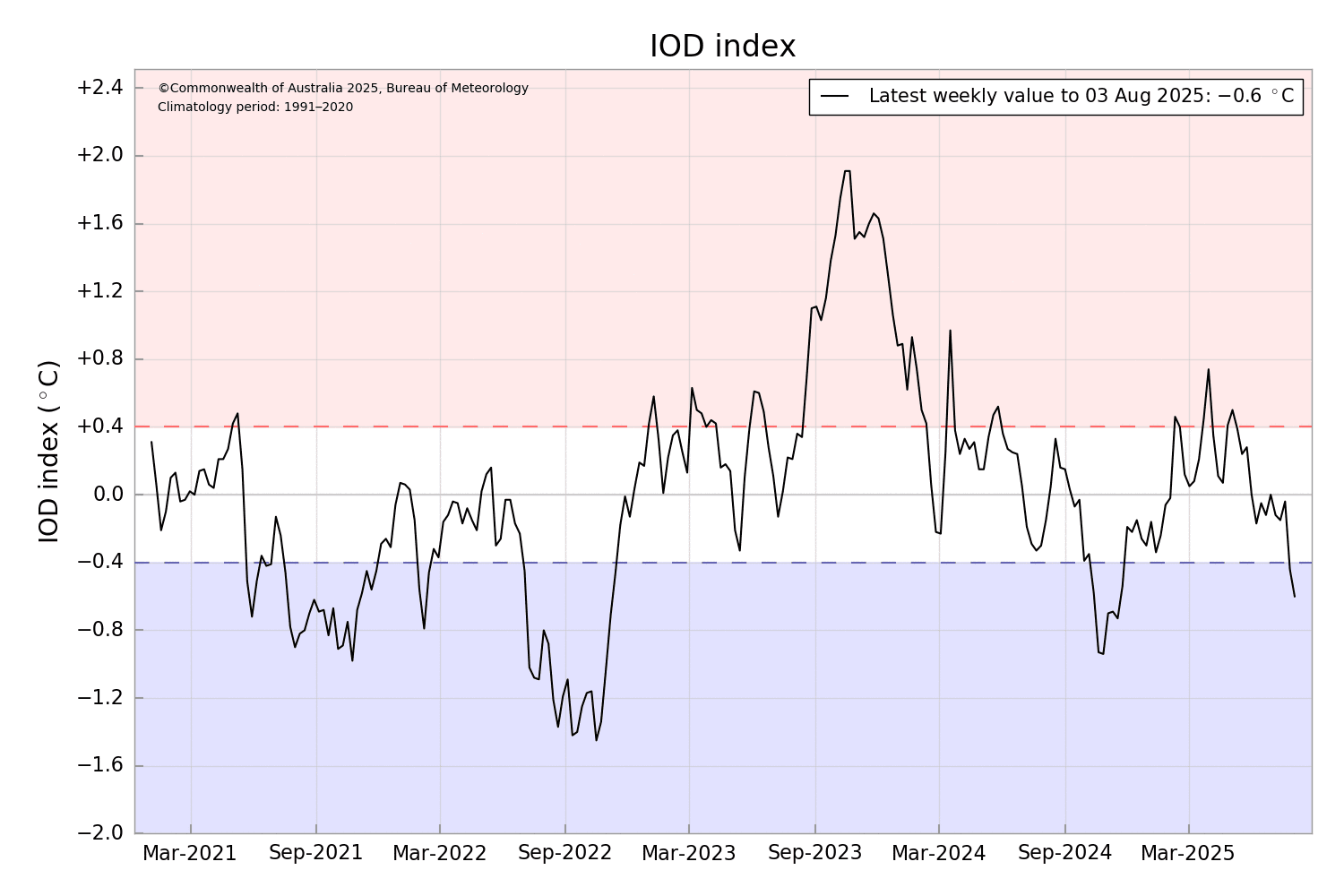
IOD: The Indian Ocean Dipole is neutral. The latest value of the index for the week ending 03 Aug 2025 was -0.6°C. This is below the negative threshold for the last two consecutive weeks. Also, this is the lowest value since Nov 2024. IOD had mostly remained marginally positive between Feb and May and started dipping below zero degrees from June onwards. The BoM model had predicted a negative IOD range from Sep–Oct 2025 and expected it to remain neutral until August. The trend of a negative value below the threshold needs to be ascertained for some more time, say another couple of weeks.
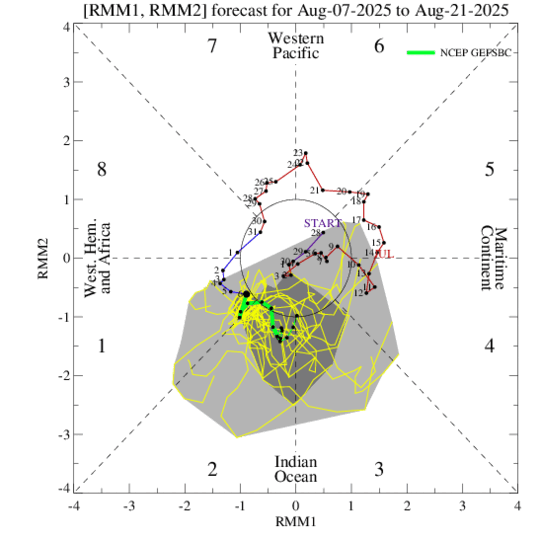
MJO: The Madden–Julian Oscillation is continuing eastward propagation across the Western Hemisphere and will get positioned over the Indian Ocean in Phases 2 & 3. There is a slight increase in the amplitude as well. The enhanced convective phase favours cyclonic activity in the Indian Seas. The southwest monsoon is in a ‘break’ phase at the moment. The MJO push may become instrumental in reviving monsoon activity over the Indian subcontinent.
Negative IOD, below the threshold, may suppress the monsoon surge on account of the cooling of the water pool in the Indian Ocean; albeit, there will be a lag between cause and effect. MJO may play a compensatory role and enhance rainfall over the core monsoon zone in the next couple of weeks.


